Last week, the Australian Bureau of Statistics (ABS) released the Q1 2025 wage price index, which revealed that Australian real wages were tracking at Q4 2011 levels, 6.1% below their Q2 2020 peak:
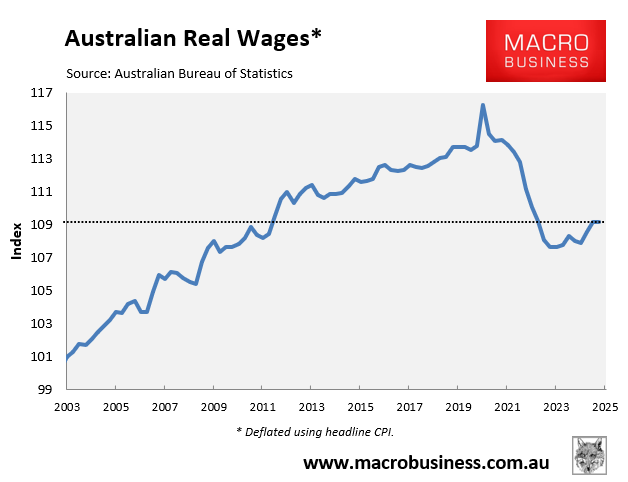
The OECD also released data showing that Australian real per capita household disposable income was tracking 7.6% below its Q1 2022 peak and has badly underperformed its OECD peers since the onset of the COVID-19 pandemic:
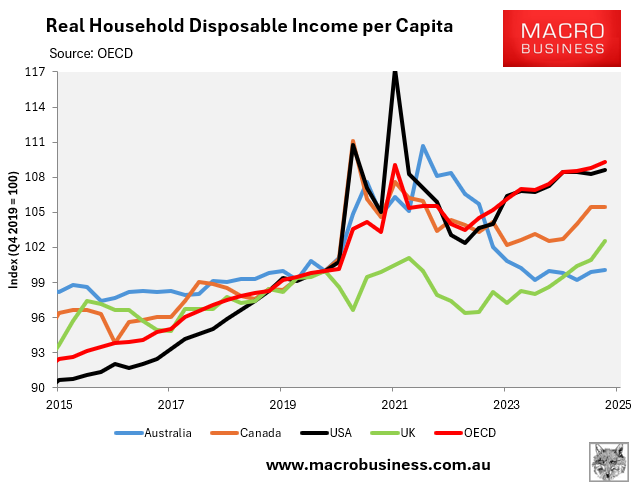
This week, the Reserve Bank of Australia (RBA) released its Statement of Monetary Policy (SoMP), which forecasts a painfully slow recovery for both real wages and household disposable incomes.
The RBA SoMP forecasts that by Q2 2027, Australian real wages will remain 5.7% below their peak, tracking around December 2011 levels:
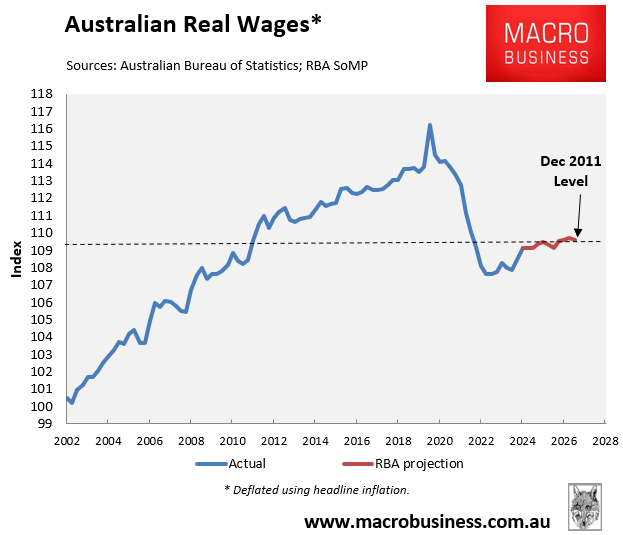
Extrapolating the RBA SoMP’s forecast suggests that real wages might not recover to their former COVID bubble peak until around 2040:
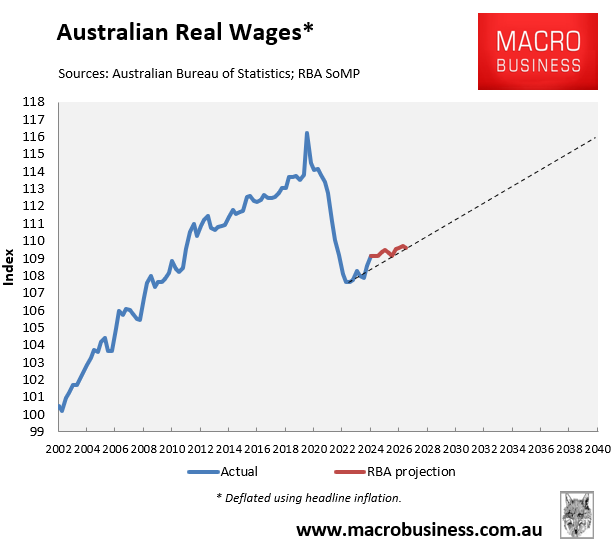
The news is a little better for real per capita household disposable income, which is forecast to experience a faster (albeit still painfully slow) recovery.
The RBA SoMP forecasts that Australian real per capita household disposable income will be 5.0% below its COVID peak by Q2 2027:
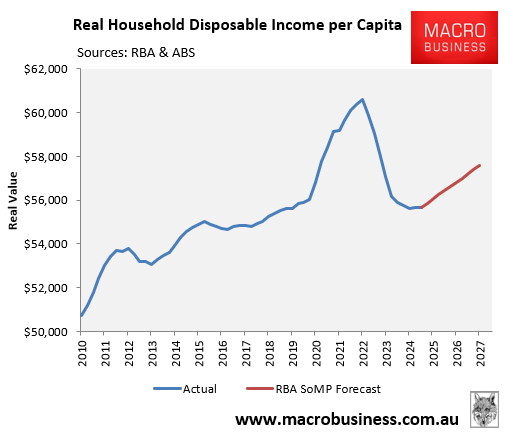
Extrapolating the RBA’s forecast suggests that Australia’s real per capita household disposable income may not recover until Q1 2031:
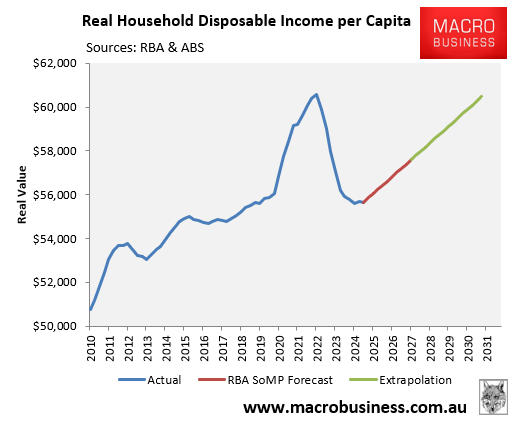
The bottom line is that it will be a long and painful recovery for Australian incomes.
Households in Australia will feel trapped in a lost economic decade.

